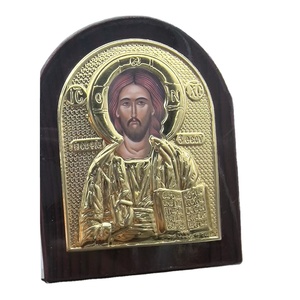Introduction to Orthodox Byzantine Art
The term Orthodox Byzantine refers to a style of art and architecture that emerged from the Eastern Orthodox Church during the Byzantine Empire, which lasted from the 4th to the 15th centuries. This period is marked by its magnificent contributions to Christian art, particularly through its intricate mosaics, frescoes, and the architectural splendour of its cathedrals. The emphasis on spirituality and divine representation makes Orthodox Byzantine art not just visually captivating but also deeply meaningful.
Types of Orthodox Byzantine Art
Orthodox Byzantine art encompasses a variety of forms and techniques, each with its unique characteristics and significance. Here are the most prominent types:
- Mosaics: Created from small pieces of glass, stone, or ceramic, mosaics adorned church interiors and exteriors, depicting biblical scenes and saints.
- Frescoes: These murals painted directly onto wet plaster illustrate the life of Christ, the Virgin Mary, and various saints, expressing vibrant colors and dramatic expressions.
- Iconography: Icons are sacred images representing Christ, the Virgin Mary, or saints, often painted on wood. They serve as a means for worship and devotion.
- Architecture: Characterized by the extensive use of domes, columns, and intricate facades, Byzantine architecture is epitomized in churches like Hagia Sophia.
Applications of Orthodox Byzantine Art
The application of Orthodox Byzantine art transcends mere decoration, serving profound liturgical and spiritual purposes:
- Worship Spaces: Byzantine art transforms churches into sanctuaries that guide the faithful’s eyes and hearts towards the divine.
- Liturgical Use: Mosaics and icons provide visual narratives that accompany the liturgy, helping worshippers engage in religious ceremonies more deeply.
- Cultural Preservation: This art form plays a crucial role in preserving the cultural heritage of Eastern Orthodox Christianity, allowing future generations to connect with their religious roots.
- Educational Purpose: Many Byzantine artworks serve to educate worshippers about biblical stories and saintly lives, thus enhancing spiritual understanding.
Features and Benefits of Orthodox Byzantine Art
The features of Orthodox Byzantine art distinguish it not only aesthetically but also in its multiple benefits to the religious community:
- Symbolism: Every element within Byzantine art carries deep symbolic meanings, linking heaven and earth, truth, and divine presence.
- Vibrancy and Detail: The use of gold leaf and vibrant colors creates a sense of divine light, making religious figures appear otherworldly and transcendent.
- Timelessness: The techniques and themes in Byzantine art have stood the test of time, continuing to inspire artists and believers alike across centuries.
- Community Identity: Orthodox Byzantine art fosters a strong community identity among worshippers, reflecting their shared beliefs and traditions.









































 Ready to Ship
Ready to Ship




